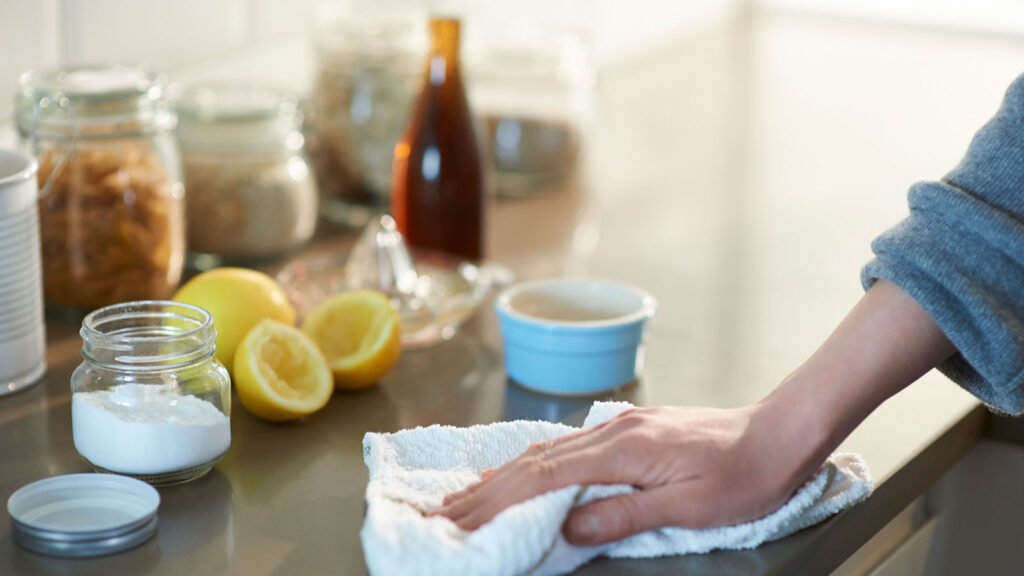Why you should never use Baking Soda and Vinegar to unclog a drain

The Baking Soda and Vinegar Myth: Why This Popular Clog Buster Might Not Be Your Best Bet
Clogged drains are a common household struggle. The internet abounds with DIY solutions, and one of the most popular recommendations is the baking soda and vinegar concoction. While it seems like a quick and natural fix, there are compelling reasons to consider alternative methods for uncloging your drains.
This comprehensive guide dives into the science behind the baking soda and vinegar reaction, explores its limitations, and unveils safer and more effective solutions for tackling stubborn clogs.
The Fizzy Science Behind Baking Soda and Vinegar:
The allure of the baking soda and vinegar method lies in the dramatic fizzing reaction that occurs when these two household staples are combined. Here’s a breakdown of the science:
- Baking Soda (Sodium Bicarbonate): A mild alkali, baking soda creates carbon dioxide gas when it comes into contact with an acid.
- Vinegar (Acetic Acid): A weak acid, vinegar readily reacts with baking soda to produce carbon dioxide gas and sodium acetate (salt).
Why This Fizzy Reaction Might Not Be Enough for Clog Removal:
While the fizzing action might seem promising, it often falls short when dealing with real-world clogs. Here’s why:
- Limited Penetrative Power: The carbon dioxide gas generated is often insufficient to break up and dislodge deeply embedded clogs composed of hair, grease, soap scum, or mineral deposits.
- Temporary Fix: Even if the initial fizzing dislodges some debris, the effects are often temporary. The sodium acetate byproduct can solidify in cooler pipes, potentially contributing to future clogs.
- Potential for Corrosion: The mild abrasive nature of baking soda can theoretically damage older or corroded pipes over time, particularly with repeated use.
Alternative Solutions for Effective Drain Clog Removal:
Several safer and more effective methods can tackle stubborn drain clogs:
- Boiling Water: Often the simplest solution, carefully pouring boiling water down the drain can help melt and loosen grease buildups. For more stubborn clogs, consider repeating the process or letting the water sit for a while before flushing with cold water.
- Plunger: A classic tool for a reason, a properly used plunger can create suction and dislodge clogs in sink and bathtub drains. Ensure a good seal around the drain opening for optimal effectiveness.
- Drain Snake (Auger): A long, flexible metal cable with a corkscrew-like tip, a drain snake can reach deep into pipes to physically remove clogs. While effective, using a drain snake improperly can damage pipes. Consider professional assistance if unsure about using one yourself.
- Commercial Drain Cleaners: These chemical-based cleaners can be effective for tough clogs. However, use them cautiously as they can irritate skin and eyes and damage pipes if not used according to the instructions. Always prioritize proper ventilation when using commercial drain cleaners.
Prevention is Key:
The best approach to clogged drains is prevention. Here are some practices to minimize future blockages:
- Drain Screens: Use drain screens in sinks and tubs to catch hair and debris before they enter the pipes.
- Avoid Grease Buildup: Avoid pouring grease or oil down the drain. Dispose of them in a separate container and discard them properly.
- Regular Cleaning: Periodically flush your drains with hot water and baking soda (without vinegar) to help prevent grease buildup and minor clogs.
When to Call a Professional Plumber:
If DIY methods fail to clear the clog, or if you suspect a more serious plumbing issue, it’s best to call a professional plumber. They have the expertise and tools to diagnose the problem accurately and resolve the clog efficiently.
Additional Resources:
- Environmental Protection Agency (EPA): For information on safe disposal of household hazardous waste, including used commercial drain cleaners:
The Takeaway:
While the baking soda and vinegar method might seem like a convenient solution, its effectiveness is often limited. Consider alternative methods or professional help for tackling stubborn clogs. Preventive measures like drain screens and proper disposal practices can help minimize future plumbing headaches.
Frequently Asked Questions (FAQ) About Baking Soda and Vinegar for Drain Clogs:
- Is the baking soda and vinegar method completely useless?
Not entirely. For very minor clogs caused by loose debris, the fizzing action might provide a temporary fix. However, for more common and stubborn clogs, it’s unlikely to be a lasting solution.
- What are the signs that my drain clog requires professional help?
Here are some indicators that your clog might be beyond DIY solutions:
* The clog persists after trying multiple methods.
* You experience slow draining in multiple drains, suggesting a clog deeper in the plumbing system.
* You notice foul odors emanating from the drain, indicating potential buildup of organic matter.
* There's visible water damage around the drain area, suggesting a leak caused by the clog.
- Can using baking soda and vinegar damage my pipes?
While the risk is relatively low, repeated use of baking soda, with its mildly abrasive nature, could potentially contribute to wear and tear on older or corroded pipes.
- Are there any safety precautions to take when using commercial drain cleaners?
Absolutely. Commercial drain cleaners can be harsh chemicals. Always wear gloves and eye protection when handling them. Ensure proper ventilation by opening windows or using a fan. Never mix commercial drain cleaners with other cleaning products, as this can create harmful fumes. Keep these products out of reach of children and pets.



